Introduction
You may have heard of best cross-selling examples from Amazon or IKEA. As is known, cross-selling is a technique that helps eCommerce sellers increase revenue, however, only when being used correctly.
Merchants can apply cross-selling in both physical and online stores.
If you do not have or are planning to build an online store, you can start creating it on the best eCommerce platforms such as WooCommerce, Wix, Squarespace, etc. Otherwise, in case you’re selling somewhere else and plan on moving to a different platform (i.e. WooCommerce to Shopify; OpenCart to WooCommerce; Magento to Shopify (also known as Adobe Commerce to Shopify), our team is always here to support you!
In the below section, we will further explain cross-selling in brief along with great strategies and successful cross-selling examples. Let’s dive in!
What is Cross-selling?
Cross-selling is a strategy that sellers perform to persuade prospective shoppers to buy supplementary products.
What are supplementary products? They are add-on items that merchants frequently suggest or acquire when customers buy the original ones. In the past, these products were very popular in the health care and insurance sector. However, since eCommerce incredibly emerged, supplementary products have considerably been adopted by online retailers as well.
Even when being a new visitor to online shops, you are likely to have seen some cross-selling practices before. Amazon is one example that applies effective cross-selling tactics by suggesting relevant products based on customers’ behaviors.
Cross-selling examples appear in everyday life, however, we may not recognize their existence as such. Several day-to-day cross-selling examples include:
- A food restaurant requires waiters to ask: “Do you want burgers with this?”
- An eCommerce store displays the “customers also bought” section.
- A computer retailer recommending shoppers purchase additional gadgets that are included in a better package of the laptop.
How cross-selling benefits your store
The top three elements that optimize customer experience include enhancing client retention (42%), client satisfaction (33%), and cross-selling and/or upselling possibilities (32%) (by Genesys). To that end, let’s unpack how the cross-selling technique can benefit your business!
Assume that you have an online store with the best-selling product at around $10 and generate $10,000 monthly. You take charge of leveling up the store revenue and plan to have a costly marketing campaign to acquire new customers. When the campaign ends, you manage to obtain a lift of 10% in sales, or, let say, an extra $1000 every month. Honestly, this is not bad at all.
However, a different store with a similar sales result chooses to implement a cross-selling campaign. Whenever a $10 product is added to a cart, the store suggests a supplementary product at $5. On the whole, the implementation of this campaign charges nothing and it keeps running in a fraction of your campaign timeline.
Needless to say, cross-selling is an effective tactic to boost your revenue. Here are cross selling’s most prominent benefits for your business:
- Increases average order value: when each of the orders brings back more value, your overall revenue will go up along with it.
- Increases customer lifetime value: the suggested product helps your store earn more per customer, and increases the amount of money that each of them spends on your business.
- Helps differentiate your brand: you can generate unique packaged selling products for each customer. Normally this is a data-based process that can bring back many customer insights.
- Enhances customer experience: this prevents customers from being frustrated after purchasing a product and then realizing that they need something else that is not included.
Cross-selling Vs Upselling
As mentioned in the cross-selling examples above, cross-selling encourages shoppers to purchase supplementary products that are relevant to the ones added to the shopping cart. Meanwhile, upselling, in the context of cross-sell vs upsell, persuades customers to buy an upgraded or more expensive version as an alternative to the product or service they choose.
However, note that upselling may not be relevant to new customers as they have little information about your brand. The weaker your relationship with customers is, the lower possibility to cross-sell (by Chartier in McKinsey & Company). New products with high prices might leave them more consideration when browsing on the internet.
The goal of both tactics can be similar, which is to maximize profit and enhance customer experience. That experience increases customer perceived value (especially works with existing customers) and customer lifetime value.
Cross-selling Strategies
The above cross-selling examples may have crossed your mind as somehow easy sales tactics. However, do not assume cross-selling is as easy as simply offering more products to your prospects. There are more considerable aspects to conduct an effective cross-selling campaign.
One of the overriding concerns should be ensuring that your offer is relevant to what customers need. Keep in mind that you are showing them the added values in the offer instead of unnecessary friction on the product page. Otherwise, your offer can make them jump off the page at any time.
Let’s have a practical example. When a prospect adds a set of jumpsuits to the shopping cart, you have little chance to succeed in offering a music DVD. These unrelated products might cause a decrease in your conversion rate. Therefore, it is not always easy to find the perfect supplementary products in a cross-selling campaign.
For that reason, we have listed out five effective cross-selling strategies that can help you buckle down to the most relevant products to offer!
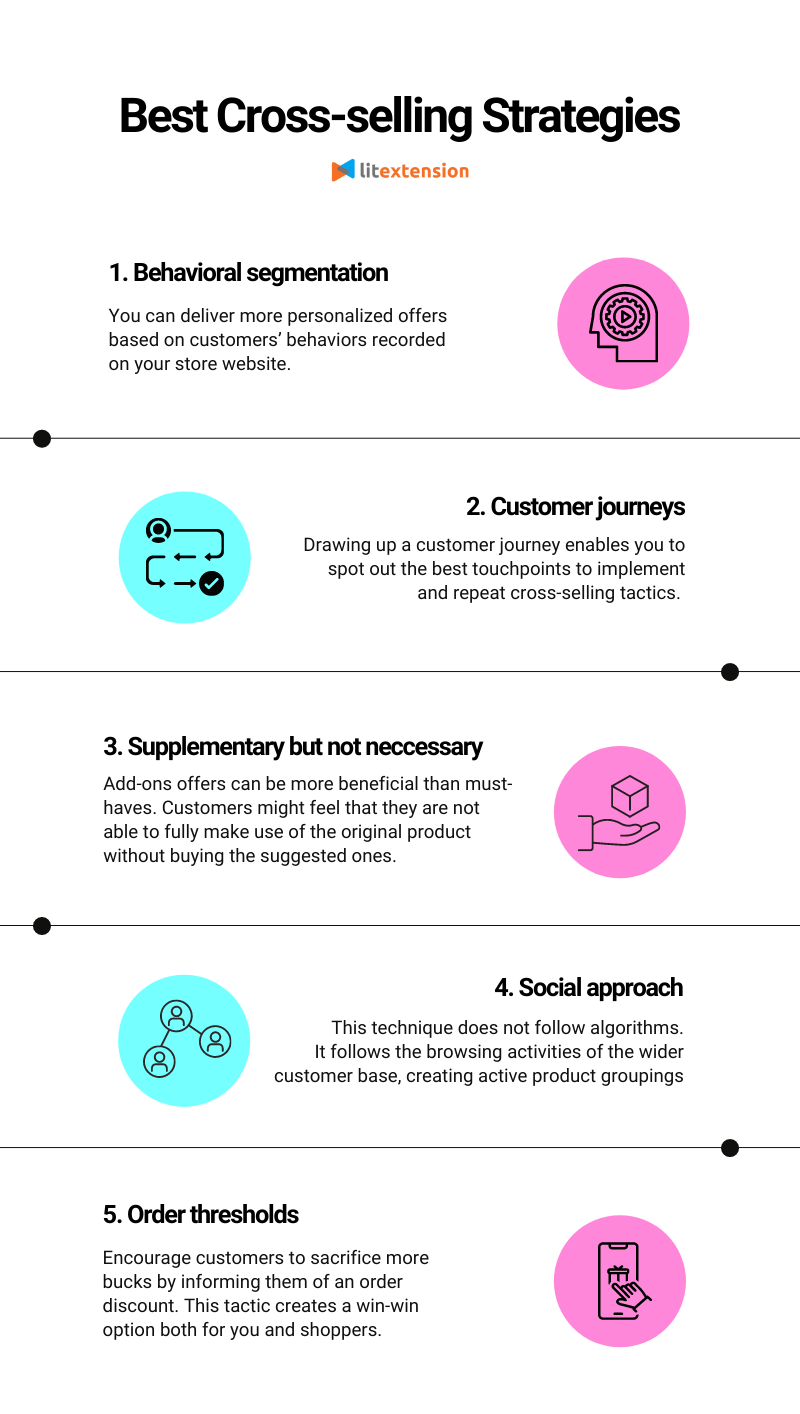
#1 Behavioral segmentation
Segmentation is dividing customers into different groups, and each group will have distinguished characteristics. Accordingly, behavioral segmentation is grouping customers based on their behaviors. It is an effective method for merchants to create customer cohorts.
You can deliver more personalized offers based on customers’ behaviors recorded on your store website. For cross-selling, it means that you can group your store visitors or current customers regarding pages that they have browsed and items that they have surfed through. Those actions on the page are behaviors, and from these behaviors, you as a merchant can better understand their targets and serve more valuable product recommendations in real-time.
#2 Customer journeys
Any attempt to offer products can fail at the wrong timing. Therefore, drawing up a customer journey enables you to spot out the best touchpoints to implement and repeat cross-selling tactics.
Imagine that you own a popular t-shirt shop. A customer has already purchased two vintage shirts from the shop and downloaded the store app as well. Two weeks have passed and they have repeatedly visited your online store a few times to find more related items. This means that they are probably interested in your products in general and it is the proper time to follow up.
Their previous online orders and activities can give you a hint on supplementary products and the best time to offer them.
#3 Supplementary but not necessary
Several extras can boost the convenience of products in certain industries.
The technology industry is an example. Its wide range of available technological add-ons or enhancements creates a potential market for cross-selling techniques. For example, a client halfway to buying a Dell laptop would have more enjoyment of the purchase if the seller recommends a Dell Sleeve and Disk Drive.
Add-ons offers can be more beneficial than must-haves when it comes to customer experience. Your cross-selling technique may flop when customers feel that they are not able to fully make use of the original product without buying the supplementary ones.
#4 Social approach
The social approach is a special strategy when comparing with others in terms of cross-selling. Amazon uses this technique in a daily manner, as you might be familiar with the term “frequently bought together” on each of its product pages.
Interestingly, this technique does not follow any algorithms, such as product sets or recommendations. It follows the browsing activities of the wider customer base and delivers active product groupings.
On the whole, the social approach is worth a trial because the product grouping suggestions may not be the traditional ones you make. Yet, everything still goes well, unexpectedly.
#5 Order thresholds
You can see order thresholds at any product sales level. Technically, they are not cross-selling because you will not be active in suggesting supplementary items. Instead, by informing customers of an order discount, you will encourage them to sacrifice more bucks. For instance, the discount can be displayed as “Spend $15 more to get 20% off!”.
This tactic helps you create a win-win option, as your average order value goes up and customers get a better deal in return. Overall, combining thresholds with your traditional offers of supplementary items might leave a significant effect on your store revenue later.
Now, let’s get into five remarkable cross-selling examples from famous brands together!
5 Great cross-selling Examples
Apple: It is irregular for anybody to not recognize an Apple product. Apple’s cross-selling strategies are as excellent as its brand footprints. If you visit the company’s check-out page on its eCommerce website, you may encounter recommendations following what you are about to purchase.
Making cross-selling as passive and simple as the brand, Apple does not overdo this tactic. The company usually recommends matching accessories and add-ons with your original product.
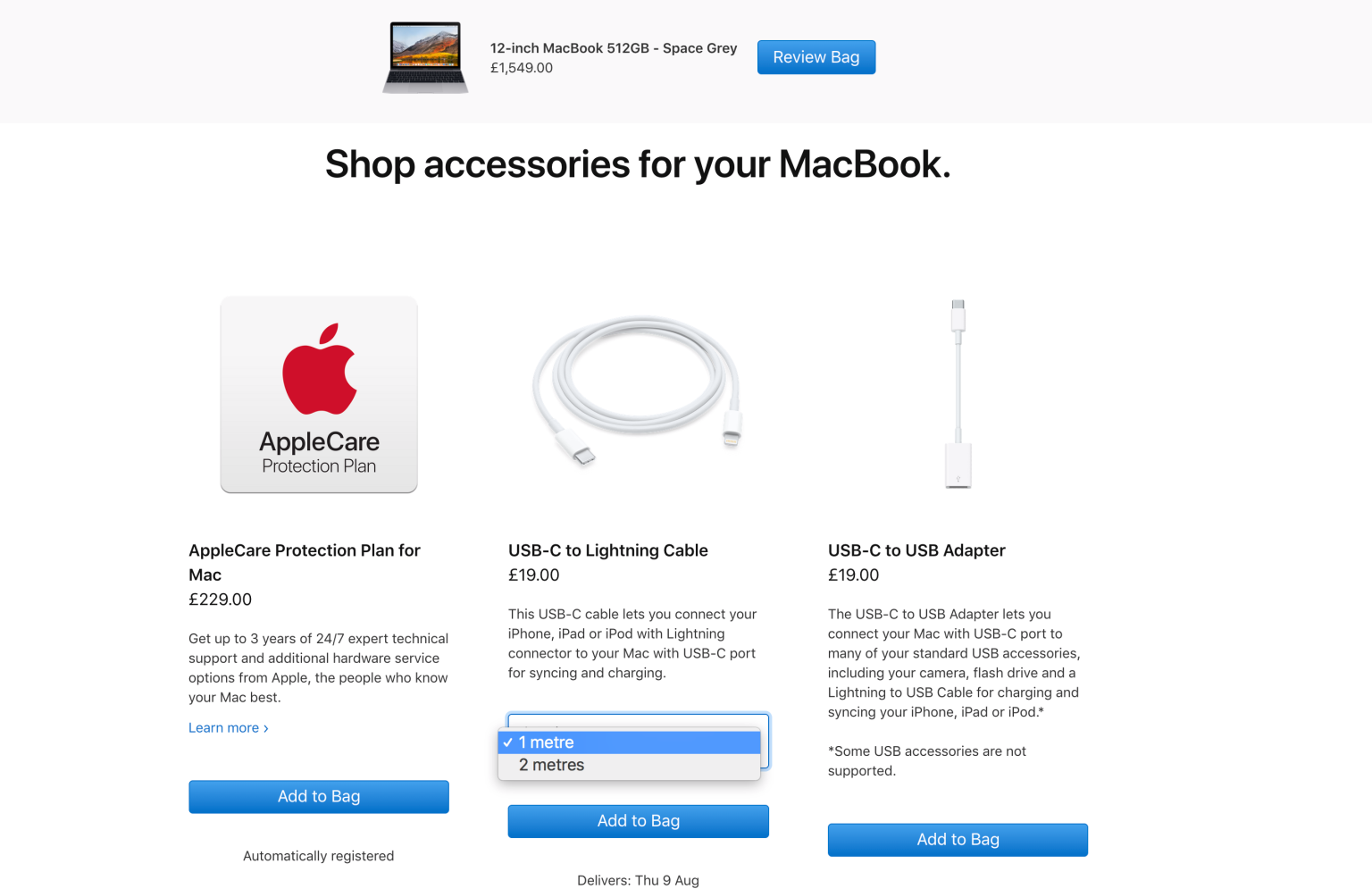
ASOS: ASOS is among the best cross-selling examples in the fashion industry that should be widely known. Whenever a customer enters to view an item, this famous British fashion brand suggests, like Amazon, other items. The suggestion even takes place before users adding anything to the shopping cart. Specifically, this brand displays the “Buy the look” trick – a perfect outfit combination generated by the product that shoppers view, to incentivize them to spend more money while shopping.

Amazon: It is impossible that you do not know about this eCommerce giant. Amazon applies effectively both cross-selling and up-selling techniques. Every Amazon shopper would notice that each time they add a product to the cart, the site will make recommendations with the section “You might also be interested in …” and “Most customers buy these products together”.
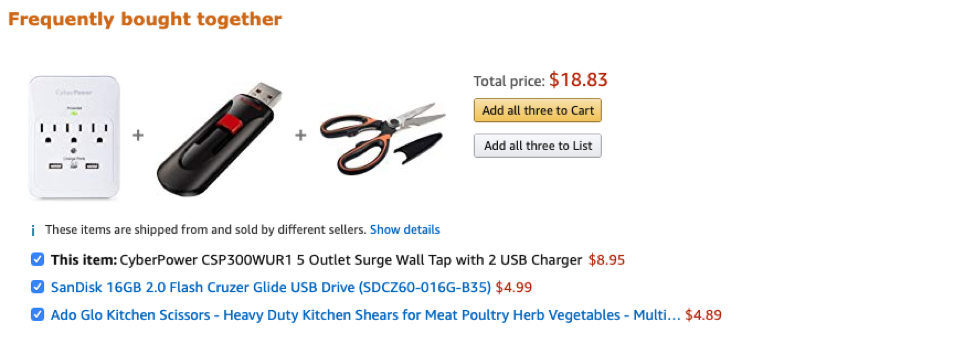
IKEA: This is a unique international furniture brand with years of customer research to get behind their minds and even feelings. IKEA shows their understanding of exhaustion when it comes to choosing a furniture style, especially when shoppers need to finish their house repairs or move. This is where IKEA’s cross-selling technique takes place, recommending added furniture items in one set. This cross-selling action takes much stress away from shoppers, and the deal offered is such a sweet one to resist.
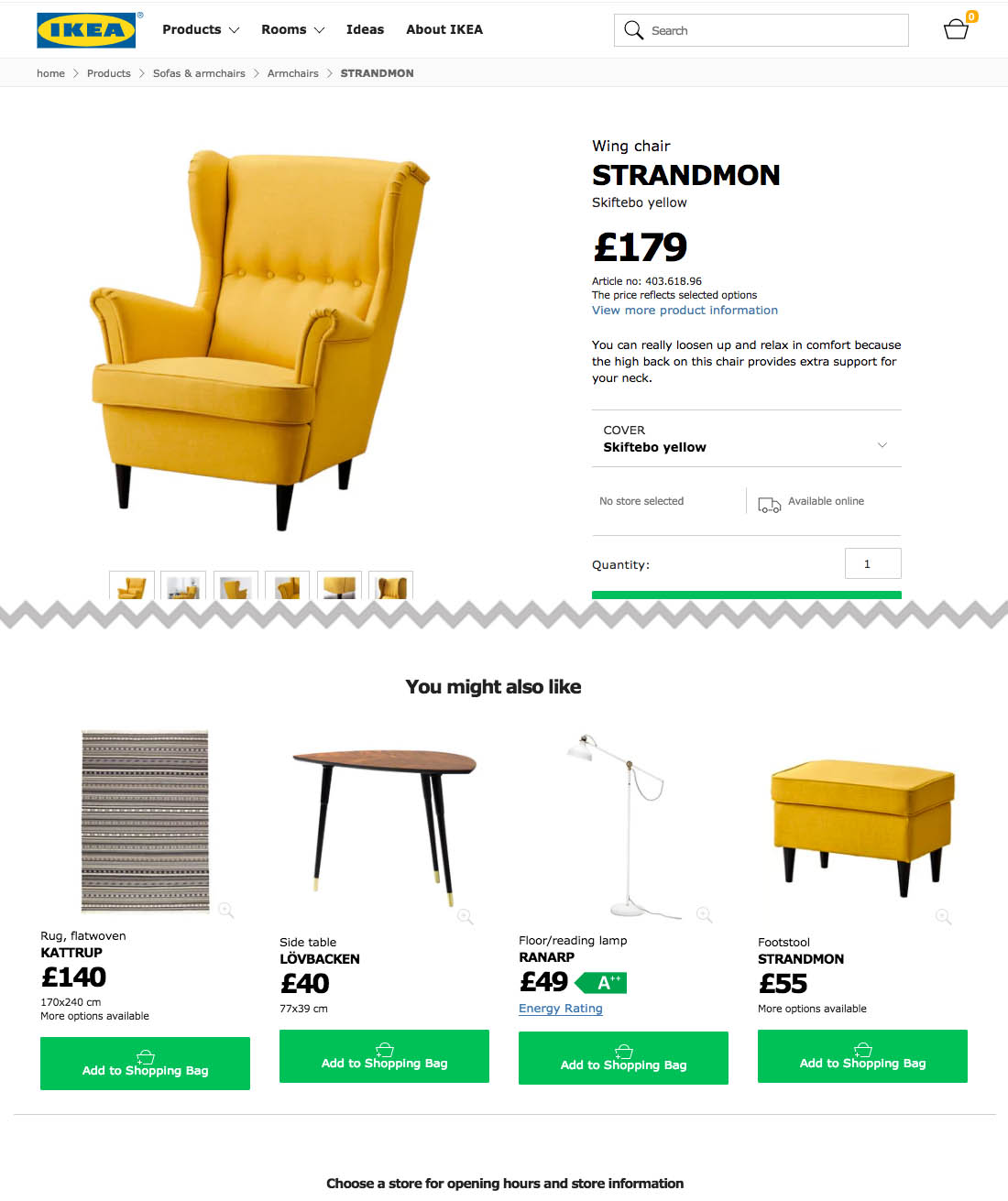
Sephora: Sephora is a popular company with around 300 beauty and cosmetics brands all-time in stock on their eCommerce website. Their products serve all types of skin such as sensitive skin types, oily and dry skin. Bundling is the key to its cross-selling strategy! In detail, the company provides both pre-packaged and pre-shopper bundles, giving shoppers a bit of freedom to customize their product deals. Sephora also enables weekly rotating offers, spotlighting different brands and offering chances to second-time buyers.
Needless to say, handing power in shoppers’ hands is a great cross-selling technique. Let them create customized packages and wait until they get more excited to repurchase from your brand!
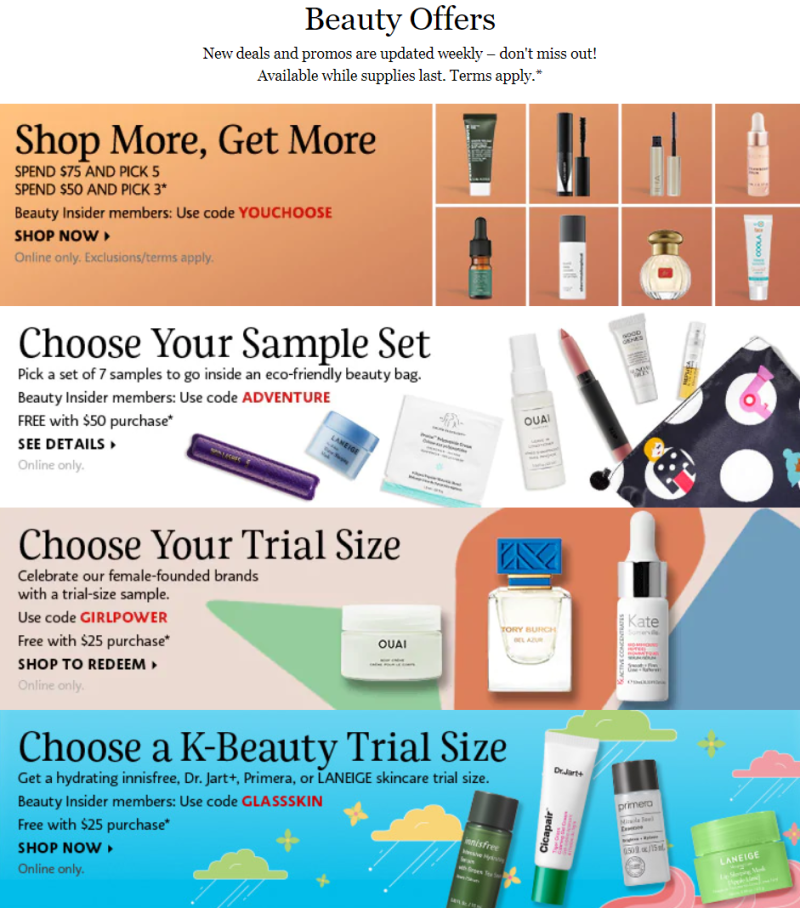
Cross-selling Examples: FAQs
[sp_easyaccordion id=”48466″]
Closing Thoughts
You might be leaving some money on the table if you never apply the cross-selling tactics. With correct implementation, they do not only level up your sales but also create a better journey for your shoppers. Dig in the above cross-selling examples once again, get inspired, and get started with your online store now!
You can join our eCommerce community to acquire more practical suggestions on your online store or contact the customer support team for further assistance.